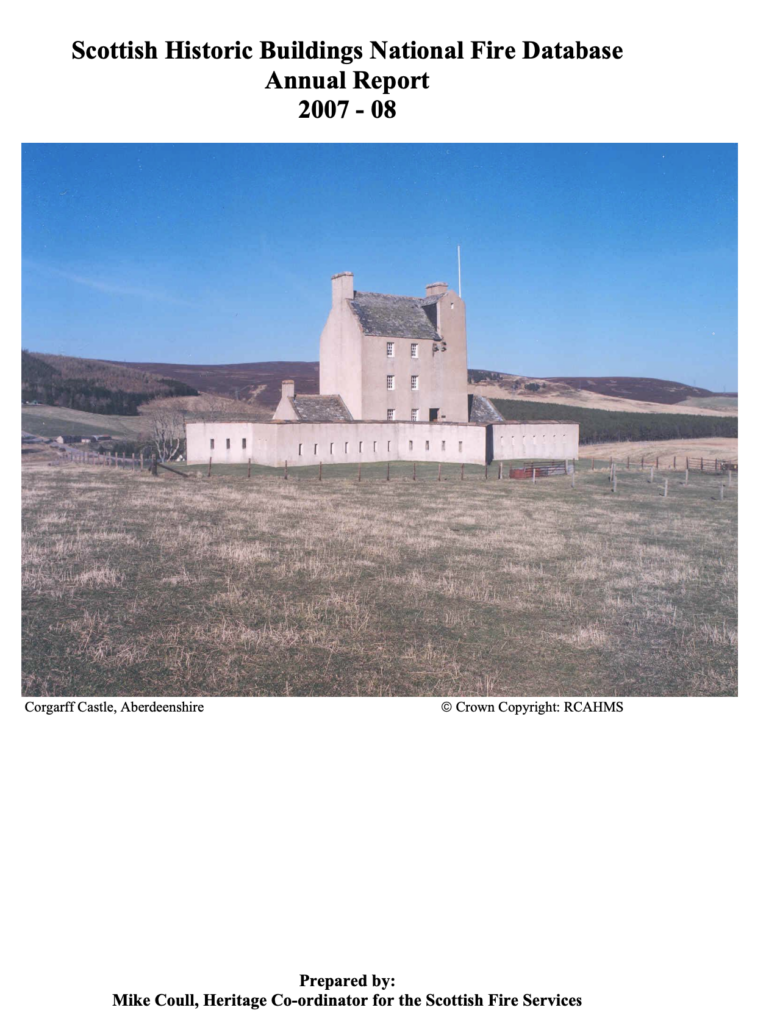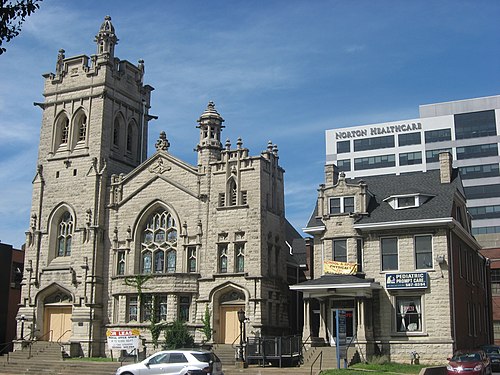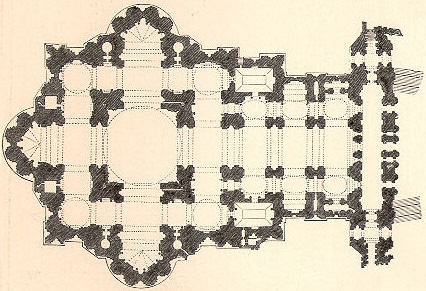Scottish Historic Buildings National Fire Database – Risk Evaluation
In evaluating and reducing the risk in heritage building, in Scotland a unique approach under the project title of the Scottish Historic Buildings National Fire Database (SHBNFD) was developed: the database provided a different kind of insight and approach to historic buildings at risk.

The SHBNFD project is an ongoing partnership between Historic Scotland and the eight Scottish Fire and Rescue Services. Initially covering the 3,500 Category A Listed Buildings across the country, the project’s overall aims are:
• to improve the effectiveness of fire-fighting operations in historic buildings by making available relevant information in a format suitable for use by fire crews attending an incident at these properties;
• to facilitate the improved reporting and gathering of statistics on fires in Scottish historic buildings
• to inform Historic Scotland’s Technical Conservation, Research and Education Group’s future research programme from the feedback material
The database has been developed as a “living document and provides an exchange of information between Historic Scotland” (who hold reference details on listed buildings), the National Monuments Record of Scotland (NMRS) –located with the Royal Commission on the Ancient and Historical Monuments of Scotland (who hold a survey, drawing and photographic archive of sites and buildings) – and the eight Scottish Fire and Rescue Services (who hold fire inspection information on buildings). Combining all of this material for each of the listed sites provides a unique insight into the location, quality and relevance for fire fighting crews.
The output from the database is an amalgam of historic information from the NMRS and other archives. This material is initially gathered by a historic buildings researcher, and then verified and expanded on by any material gathered on site by a seconded fire officer from each of the eight Scottish Fire and Rescue Services, following a related series of site visits. The initial phase of the project aims to incorporate each of the c3,500 Scottish Category A listed properties in the database.
The type of collated information includes architectural descriptions, photographs, plans, access routes and details of water supplies. In addition, priority areas within a property that are of highest historic significance are identified, as are ways in which a building’s structure may adversely affect fire-fighting operations.
An immediate benefit of the database is the improved awareness of the location, significance and importance of historic buildings within the Scottish Fire and Rescue Service areas.
The longer-term benefit of the project will be in helping to mitigate the devastating effects that fire can and does have on Scotland’s built heritage. Today, the majority of the country’s Category A listed buildings had been included across the eight Fire andRescue Service rural areas and in the smaller towns.
Agreement was also reached on how to extend the exercise to include the high proportion of Category A listed buildings that exist within the cities of Glasgow and Edinburgh. The Scottish Historic Buildings National Fire Database has been well received as a valuable example of collaboration between cultural heritage professionals and the fire and rescue authorities.
Used together with relevant statistics on actual fires, the database is considered to present a very effective means of increasing future fire safety in historic buildings.
As a result, its recognised value, potential for a much wider application, and clear operational benefits for fire-fighters has been acknowledged. It was also considered that the project approach could be adopted by other countries where similar, or related, datasets of information exist and could have the potential to be integrated.
Excerpt from COST C17 final report – Author: Mike Coull





